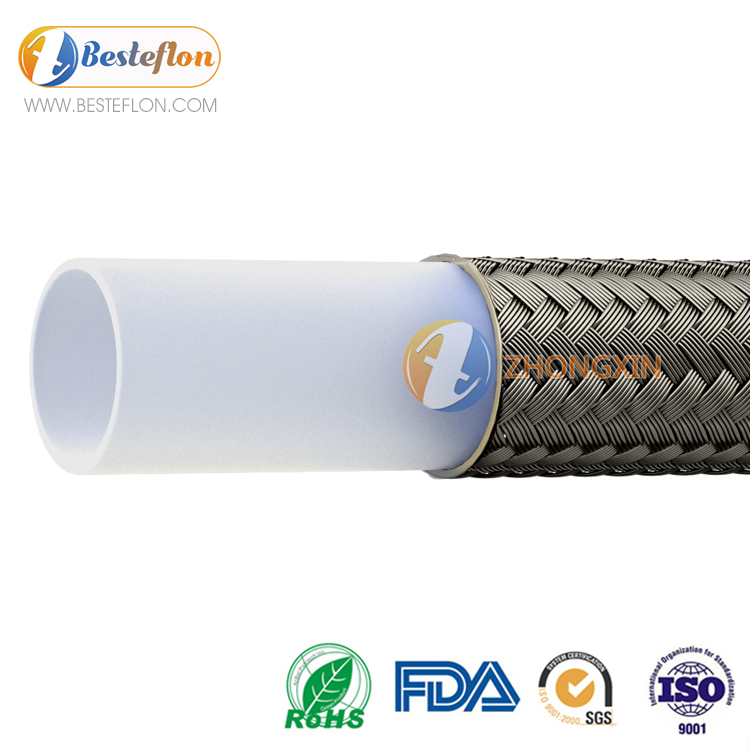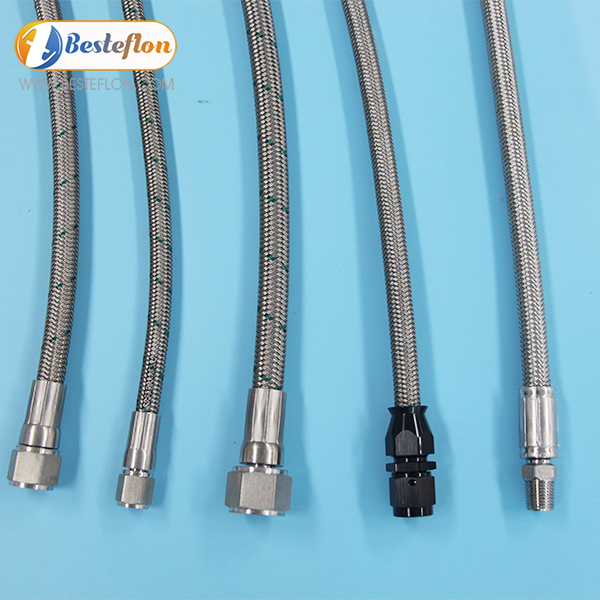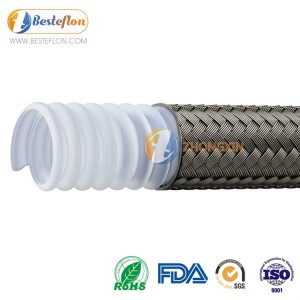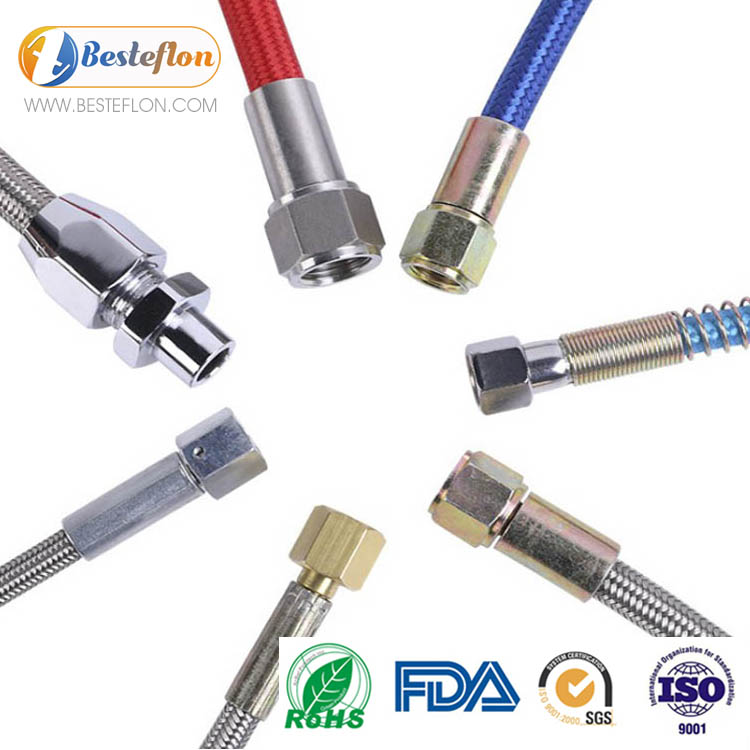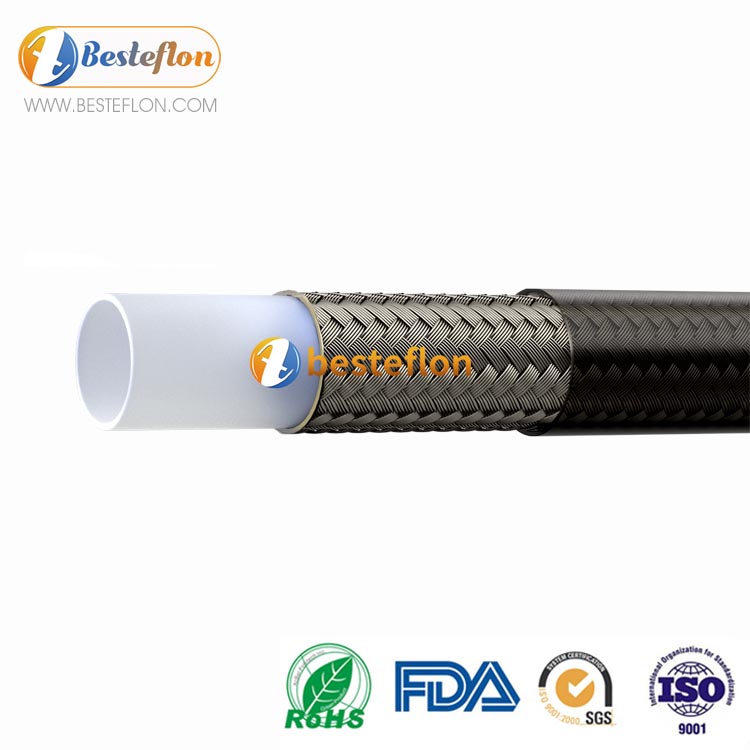How To Install PTFE Brake & Fuel Hose
In this "how to", we will show you how to put some PTFE hoses and fittings. In this example, we will use -4 AN/JIC stainless steel braided hose and accessories to make the hose from the brake fluid reservoir to the master cylinder. But the same method is also applicable to other pipes and hoses of the same type
The tools you would need are as below
- Bench Mounted Vise.
- Motamec Vise Jaws.
- Motamec -4AN/JIC Alloy Wrench
- Small-pointed flat-head screwdriver
- Pliers
- Either a fine-tooth saw or a set of very sharp knives
- Some lubricant
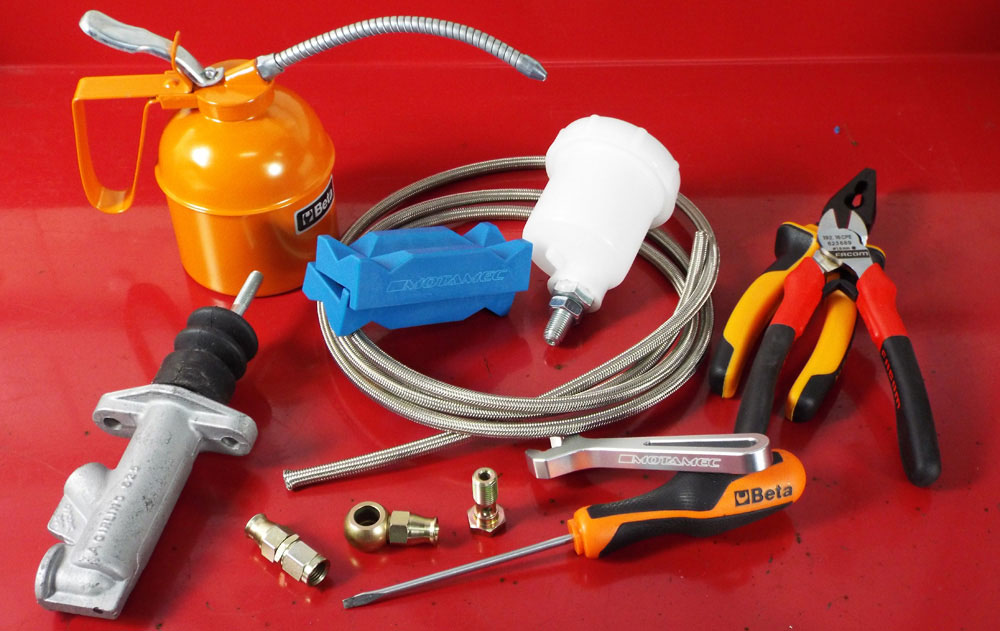
Measure Twice Cut Once
Measure the number of hoses you want, then cut it. We chose to cut the hose with a very sharp knife. But if in doubt, use a fine-tooth saw, especially for thicker hoses. Because it’s very important to have a very clean and straight incision
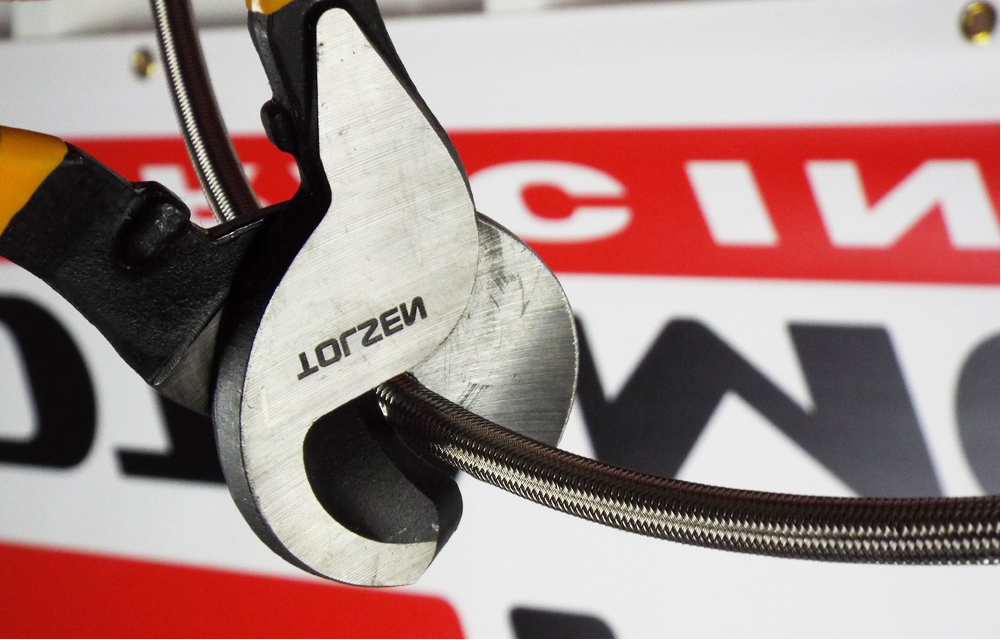
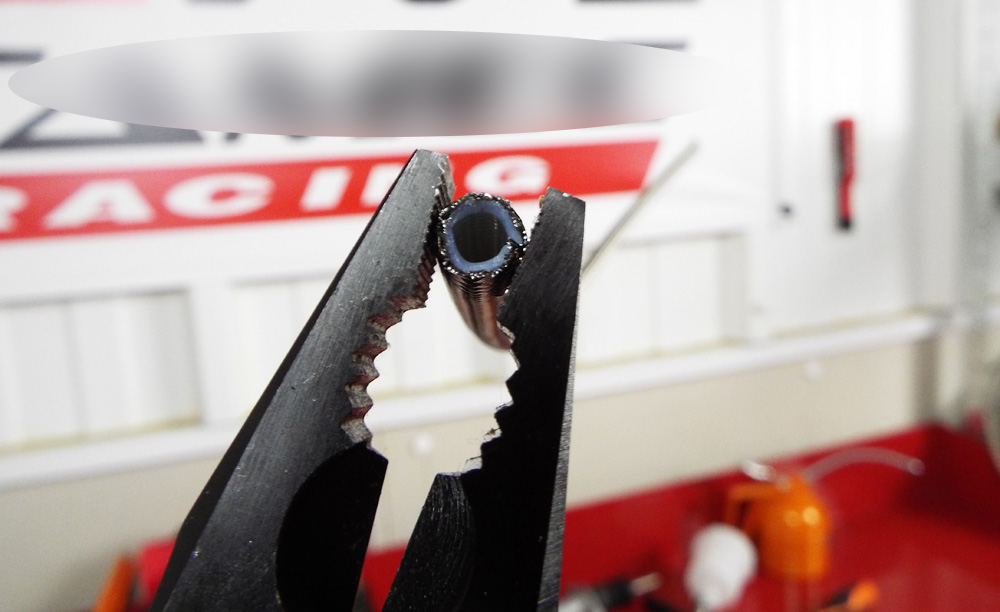
Fitting The Olive
The first picture below shows that the accessory is broken down into several parts. Therefore, take your fittings separately, as shown and important sliding end of the hose thread facing the female end pipe fittings. Next you need to make room to slide the olives inside the PTFE. Therefore, use a small flat-head screwdriver to carefully work around the PTFE to move the stainless steel to create a chamfer. Then insert the olive inside the PTFE. You need to be careful and evenly knock the olives into place, we use a vise to knock the hose very firmly. Do this until the PTFE inner hose meets the "step" inside the olive
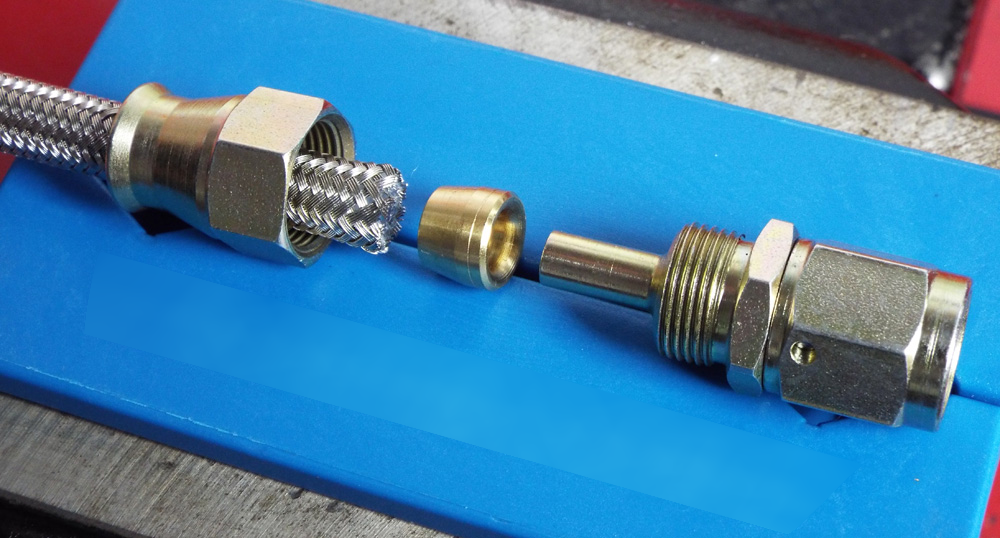
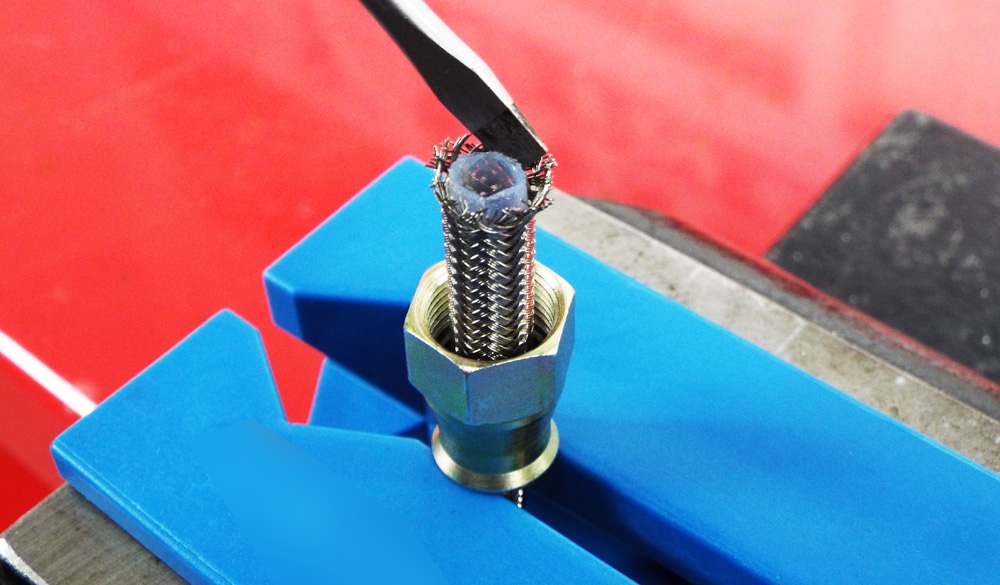
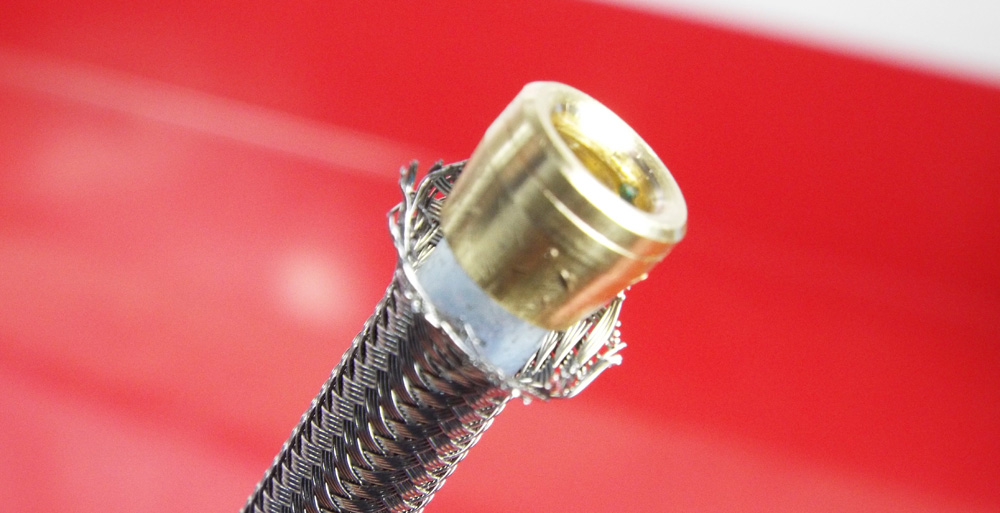
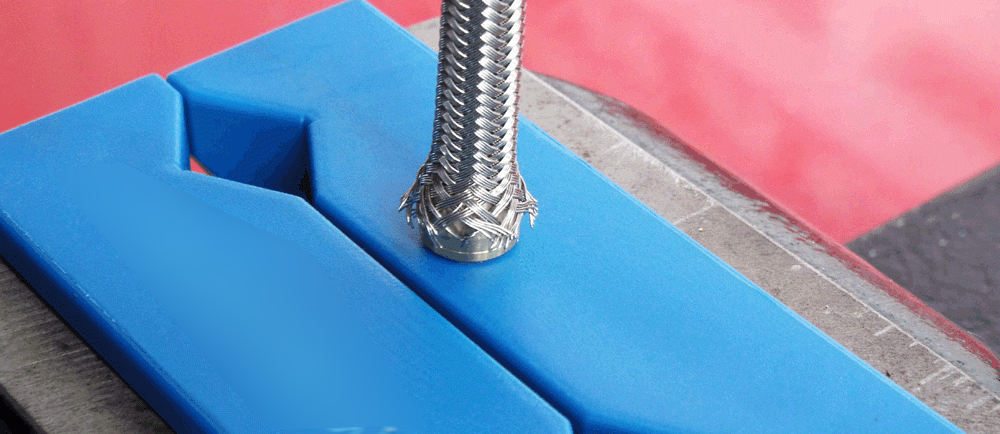
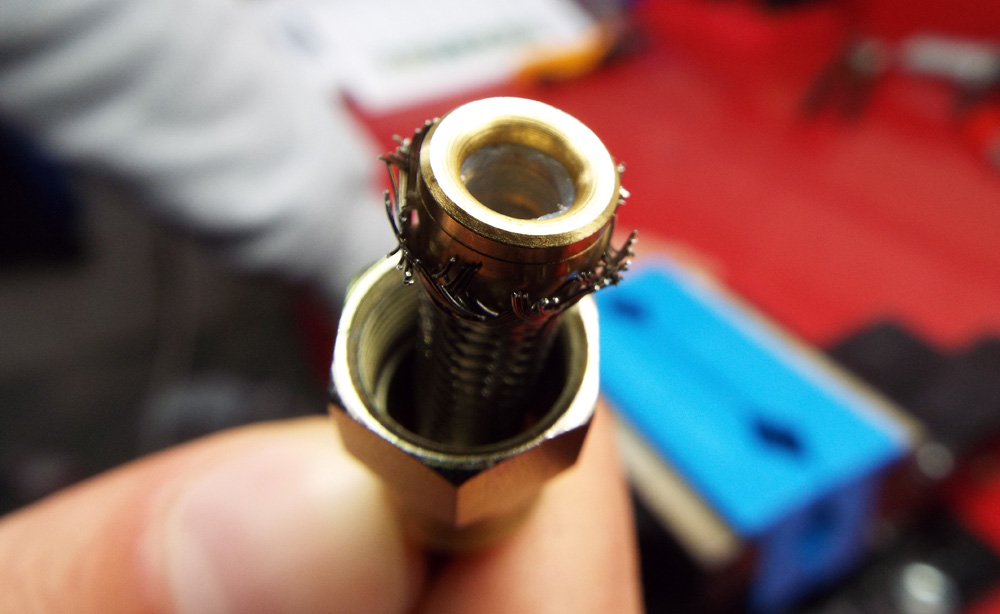
Assembling the Fitting
Now it's time to finish assembling the accessories. The first picture below should let you know what to do next. But first we have to put a drop of lubricant on the accessories. Now you need to push the hose onto the pipe fitting so that the mandrel on the pipe fitting will enter the PTFE inner hose. Push the hose all the way down so that the olives are in contact with the base
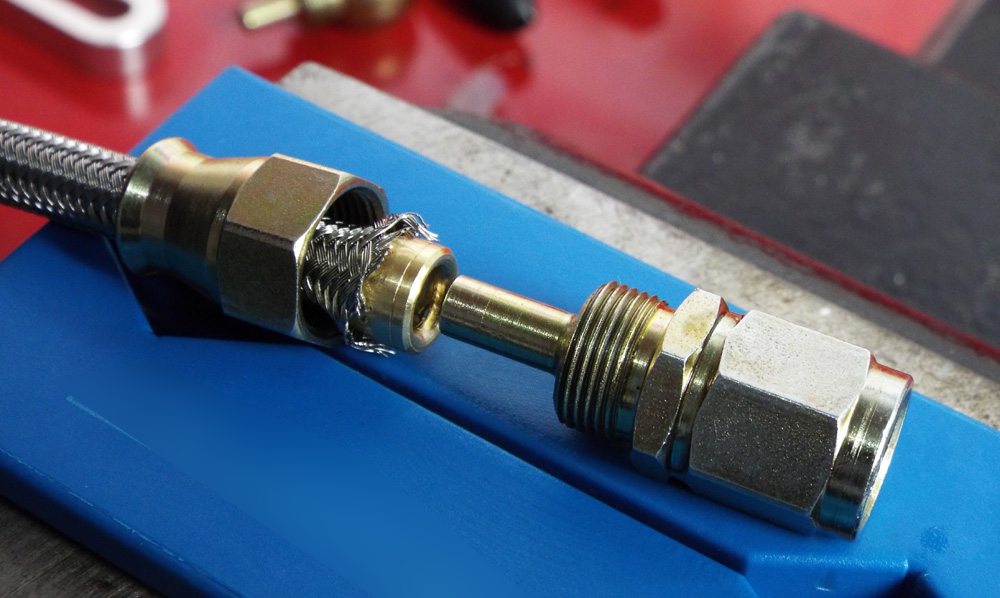
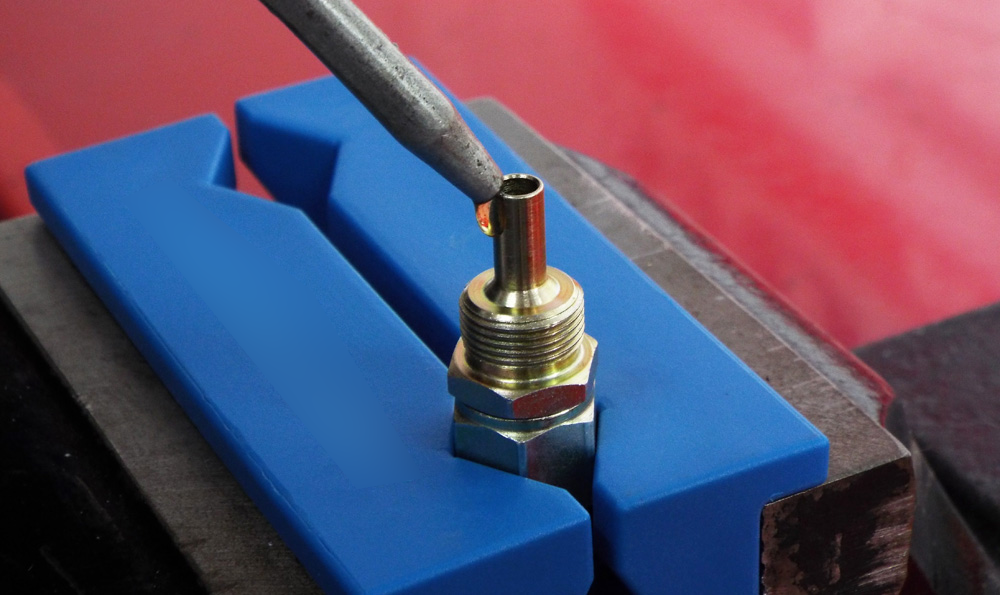
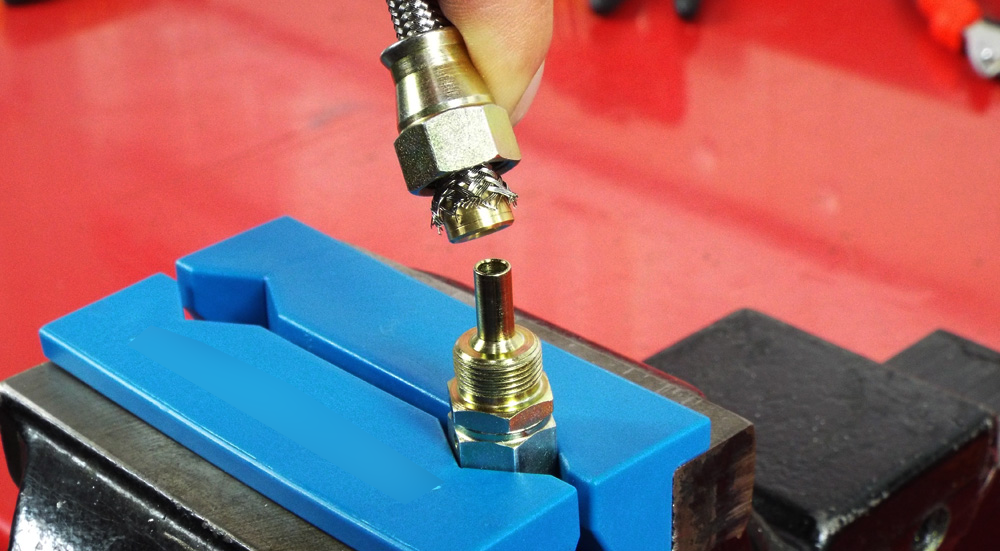
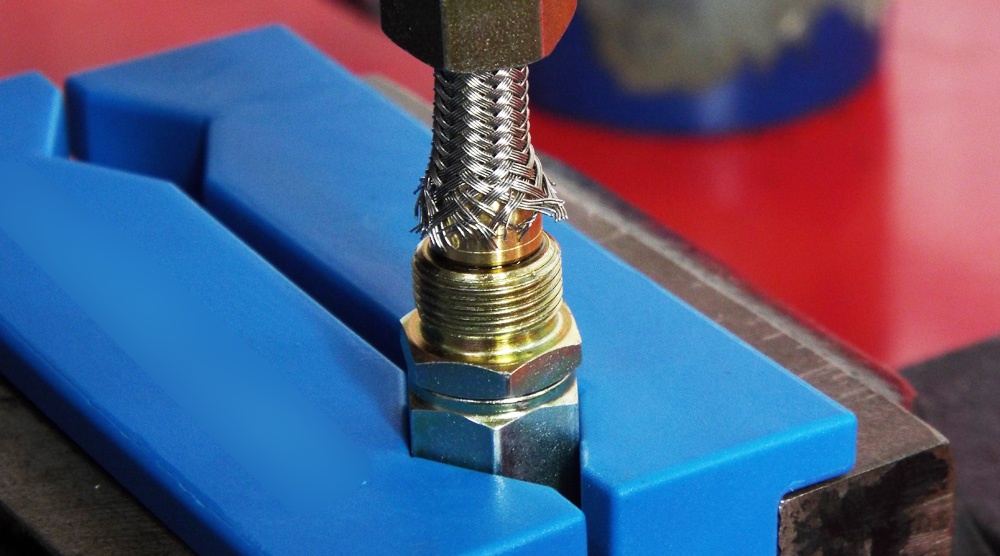
Tightening the Fitting
Next you have to tighten the accessories. It is important to ensure that no loose stainless steel braided wires interfere with the wires on the pipe fittings. If the stainless steel braid is stuck on the thread, there is a risk of damage to the pipe fittings, especially alloy pipe fittings. Therefore, to tighten the connection now, you may need to position the connection in a vise to fix the rotating part of the connection (if a rotating connection is used). Use appropriate wrenches to tighten the pipes gradually for safety
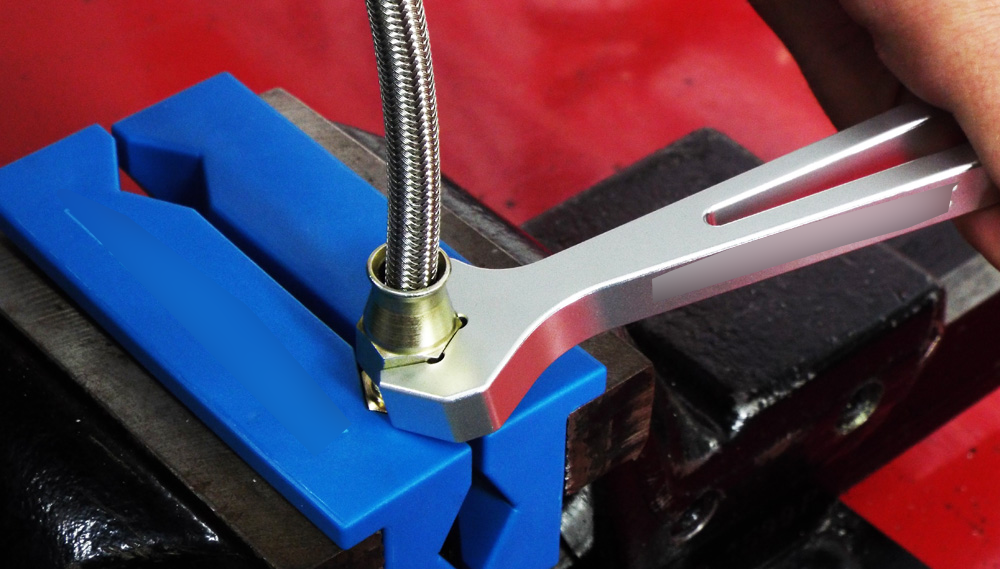
The Finished Hose
Now you can use the same method on different accessories of this type. For example, the following banjo assembly performance is assembled in the same way. After installing the banjo, our hose is complete and ready to use!
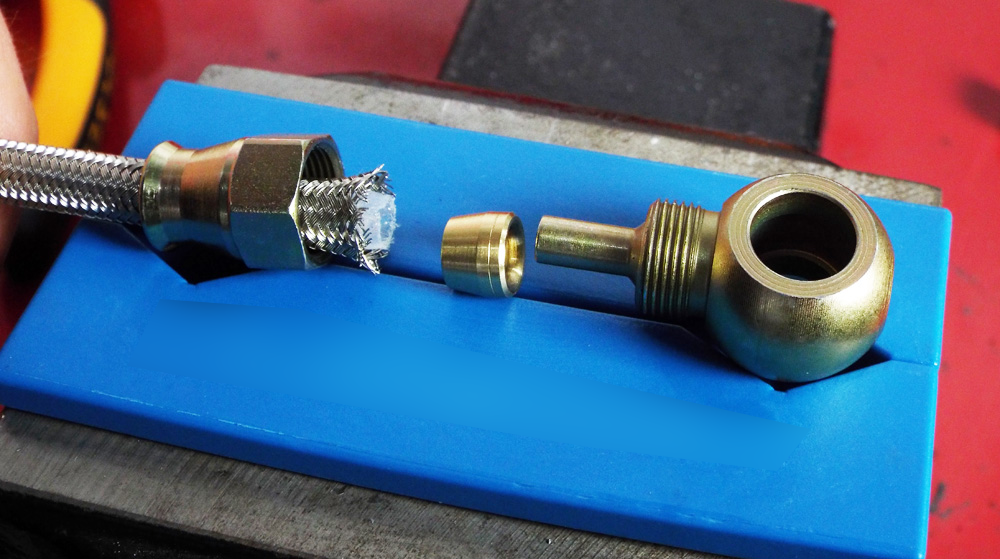
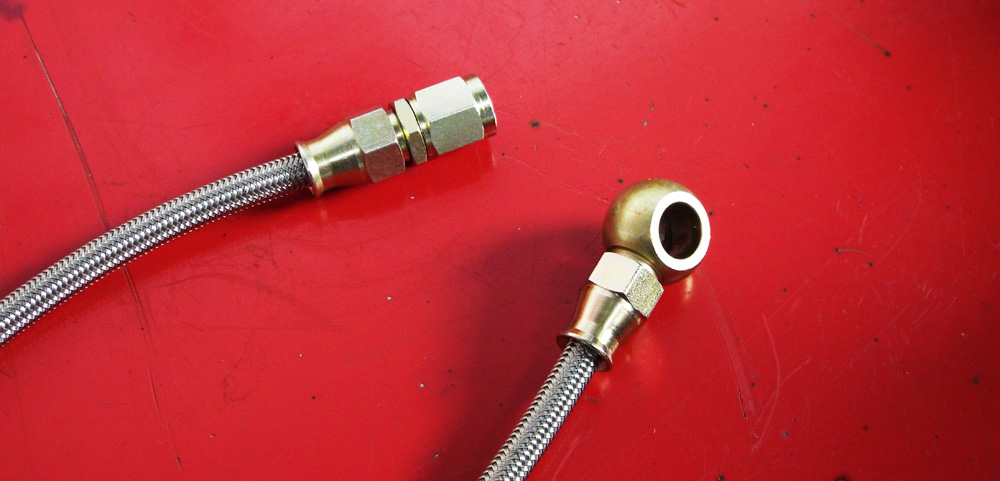
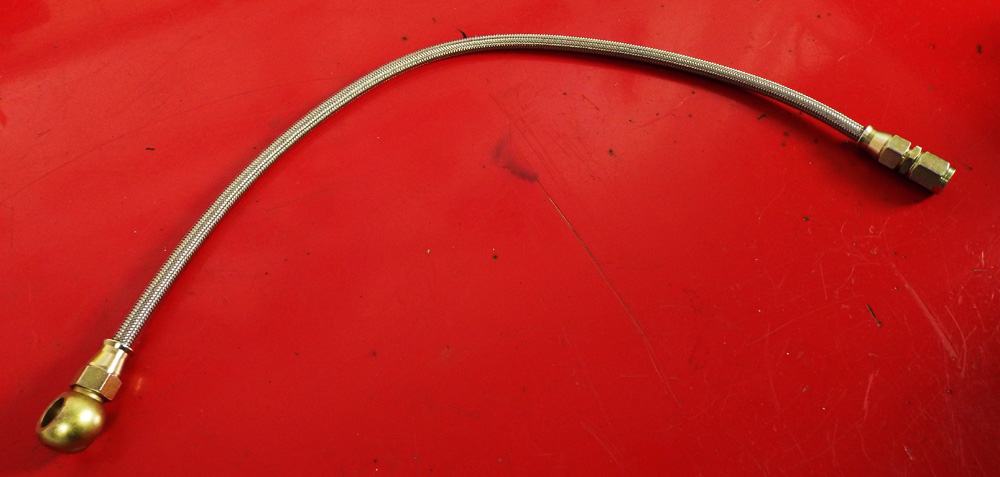
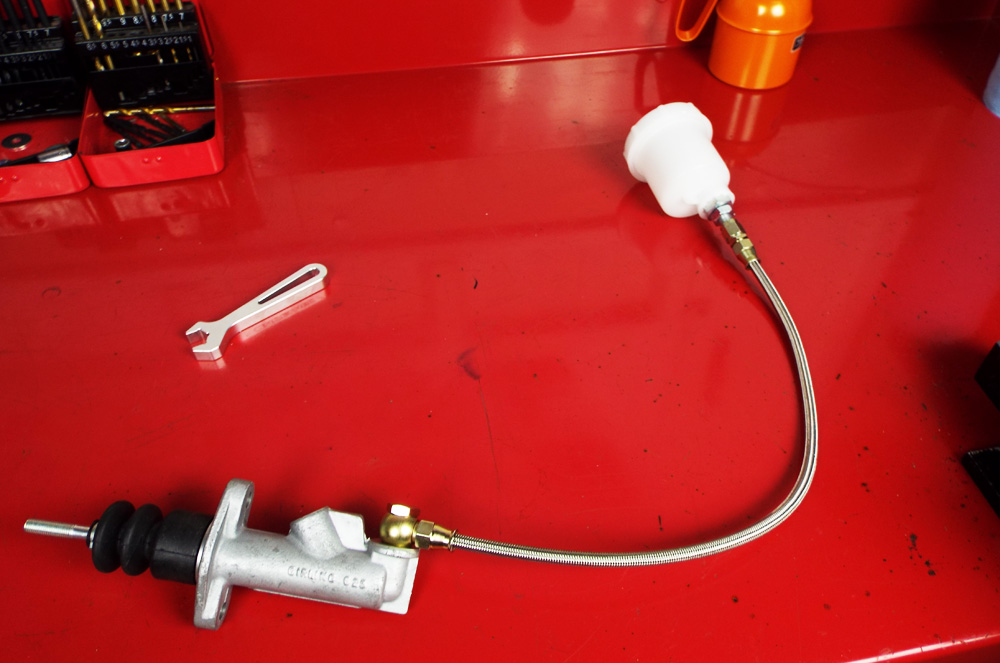
Change is often accompanied by compromise, which is the case with today's gasoline. It is not the sweet-smelling pseudo-solvent fuel we used when we were growing up-at least most of us are like this. Modern gasoline is a strong-smelling chemical substance that contains a lot of additives. It burns cleaner, which is good for performance and emissions, but its ingredients penetrate into the rubber, including the fuel hose. In fact, it can penetrate the rubber hose, dry it prematurely, make it brittle, crack, shed tears, and may even fail
This is an increasingly common problem, and you may have noticed it because it manifests as a leaky smell. Not surprisingly, this smell also worries anyone with a high-performance engine-for engines equipped with power boosters or other engines that need to upgrade their fuel system and may use rubber-core braided steel hoses. It seems to be a special problem. Normally, this smell is caused by the fuel "boiling" through the rubber hose when the car is parked in the garage. Apart from the safety issue of gasoline vapor in your garage, this smell is not attractive. In addition, this smell is only an early warning that the rubber fuel hose is drying and will eventually fail
So, although you can't change the gasoline that refuels the engine, you can change the hose that conveys the gasoline, which solves the problem and can smell. The solution is to replace the traditional rubber fuel hose with a polytetrafluoroethylene (ptfe) core hose. PTFE is the abbreviation of polytetrafluoroethylene (PolyTetraFluoroEthylene). PTFE hoses have been around for a long time, mainly for braking and hydraulic fluid transmission applications. PTFE hose fuel is a big improvement, they can now "conductive core", which is a carbon liner added in the production, when combined with fittings installed at the ends of the hose joint, provides a path for any static electricity. If you want to know where the static charge will come from the fuel line, this is a quirk of PTFE materials. When non-conductive liquids, such as gasoline, diesel, ethanol, methanol, or similar products pass through at high speed, stray electrons (static electricity) are generated. This is obviously an undesirable condition for gasoline, so the conductive core of the PTFE fuel hose eliminates the possibility that static electricity will find the ground and burn your truck like a Labor Day barbecue
Yes, PTFE hoses are more expensive than traditional rubber fuel hoses, but they are not prohibitive. This is definitely an affordable upgrade, you only need to perform it once during the life of your truck, and the rubber hose may need to be replaced more than once to prevent the smell of gas leakage
We also manufacture conductive PTFE hose for your automotive fuel application, if you have any further inquiry or technical questions, please freely contact us at sales02@zx-ptfe.com
Searches related to ptfe hose assembly
Post time: Feb-27-2021

